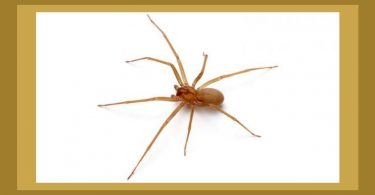Case-taking for Women’s Problems
- Find out what the problem is and when it started. Ask what was going on around that time. Especially ask if they were on the birth control pill because this is the etiology in a lot of women’s problems, and very often the remedy is Sepia (“Never Well Since The Birth Control Pill”).
Find out the sensation and modalities of any problem they mention.
If they mention a discharge, ask for the color, odor, consistency and sensation; for example, it may be white and lumpy, itch, burn or irritate, etc.
- Get the menstrual story–is it regular? Is there pain? What’s it like: sensation, location, modalities (“modalities” mean things that make the complaint better or worse). PMS? What’s it like? Psychological concomitants? Type of flow–color, consistency, amount? For instance, it could be profuse, bright red, with clots or dark with clots, the clots could be large or small, black or red; the blood could be thick or stringy or watery, etc., and ask if there’s anything peculiar about it, like, flow only when walking or only when lying down, etc.
- Reproductive history–Any pregnancies? Miscarriages? Abortions? What kind of birth control is/was used? What were the pregnancies like?
- Never Well Since childbirth? Was there a lot of bleeding? Post-partum depression? Loss of sex drive? C-section? Never Well Since anesthesia?
- Were there any problems with nursing?
- Any surgery?
- Any infections? If so, what was the treatment and what were the results?
- Ask about the Generals: psychological state, sleep, thirst and appetite, body temperature, reaction to weather and temperature.
- Ask if there are problems with specific organs or systems.
- Are they in menopause? What is that like for them?
- Sexual dysfunction or sexual problems physically or psychologically?
- Try to determine the cause of their complaint.
Menstrual Cramps
What position does the woman assume? Bending over double or pulling the knees up to the chest could indicate Colocynth or Mag-phos. Always ask, “What do you do when you have cramps?”
What does the woman say? For instance, “Stop bothering me, just get out! Leave! Go away!”–That’s Chamomilla. “I feel a throbbing sensation and I’m really angry!”–Belladonna. “Could you fill up the hot water bottles?”–Mag-phos. “My cramps are in my back”–Kali carb.
Day-2
Day-2 has its own special problems. The cramps themselves may be gone by then but the most bleeding takes place on days 1 and 2, meaning the most blood loss and with it, iron. Day-2 might find some women feeling unexpectedly anemic, pale, prostrated, hardly able to move and with a headache, most likely, as well. The remedy to take on day-2 is Ferrum Phos. 30C or 200C. You might have to repeat it several times, so, make sure you put a few pellets in a bottle of water and succuss 5 times before each dose, a dose being a sip. You should avoid hot showers and baths on day-2 as fainting is a possibility.
Some Common Remedies for Cramps
- Colocynth–Irritable. Severe, sharp pains; may cause her to vomit; doubles person over, may be crying or screaming, doesn’t want to be touched or moved. Better hard pressure, warmth, coffee. Left-sided ovarian cysts.
- Mag-phos.–Right-sided. Better heat, hot bath, hot water bottles. Not as severe as Colocynth. May also be bending double or pulling knees up to chest, but, with Mag-phos., the emphasis is on heat and for Colocynth, the emphasis is on pressure–hence, the bending double, or pressing with hands, or walking in a bent over position.
- Dioscorea–Patient needs to stretch back (opposite of Colocynth)
- Belladonna–Uterus feels full, as if all the blood had rushed there, throbbing pains, violent pains, right side is worse, spasms that come and go quickly, worse being jarred, bearing down pain, flushed face. Irritable. Flow is profuse, bright red, clotted, gushing. Bearing-down sensation. Worse motion, light and noise. Better lying down but head elevated. Either great thirst for cold water or no thirst at all. Desires lemons or lemonade.
- Cactus–Uterus feels constricted, as if a band around it. Violent pains, may scream. Lumpy flow. Clots. Pain with each clot that’s passed. Worse lying on left side. Worse exertion. Worse walking. Better outside.
- Caulophyllum–Bearing down pain with severe exhaustion, chills, drained, thirsty, weak and apathetic.
- Sabina–Hemorrhage of bright red blood with dark clots, painful, sharp.
- Ipecac–Cramps with nausea, hemorrhage of bright red blood.
- Nux vomica–Cramps extend to the whole body; they may feel toxic, as if they had a hang-over. Digestive upsets, everything they eat upsets them; heartburn, gas, constipation. Very irritable, demanding and impatient, sensitive to light, noise and odors. Wants to be left alone. Worse pressure, better rest and lying on either side. Desires fats, spicy, alcohol and stimulants.
- Chamomilla–Hard to tell apart from Nux vomica because of their negativity. Capricious, hard to please, whiny, very demanding, inconsolable. Profuse dark, clotted blood with gushing of bright red blood. Severe pains. Pains extend down inner thighs. Worse lying in bed, better cold applications. Thirsty for cold drinks.
- Pulsatilla–Has an affinity for female reproductive system and hormones. Give when you see the classic Pulsatilla mentals: Crying pitifully, feeling abandoned, lonely, unloved, better consolation, calls her friends and family and complains about the cramps and the PMS. Chills with every cramp. Better walking in fresh air.
- Ignatia–Cramps with grief, mood changes, hysteria. Sensitive to odors and noise. Sighing.
- Cimicifuga–Cramps in the back, lumbar sacral region, extend down thighs. Flow is profuse, dark, clotted. Pain across pelvis from hip to hip.
- Kali carb.–Back pains, extends to thighs, sharp stabbing pains. Wants the back pressed.
- Sepia–Bearing-down pains as if the uterus would fall out. Fainting during menses. Sepia can also have a backache. Irritable, wants to be alone. Etiology could be the birth control pill.
- Veratrum alb.–Cramps marked with frequent stools and vomiting. Chilly. Fainting. Prostration. Thirsty for cold water.
Morning Sickness
- Anacardium–Nausea better from eating. Sudden empty feeling followed by nausea.
- Arsenicum–The usual Arsenicum generals: Fear of pain and suffering, anxiety, panic about the baby, anxious and restless, something bad will happen, hypochondria, nausea, vomiting, better sipping warm drinks.
- Antimonium crud.–Thick white coated tongue.
- Bryonia–Severe nausea. You may have noticed that every Bryonia case has something severe about it, which explains it’s well-known keynote, “worse least motion”. If they have a headache, it’s severe. If they have a pain, it’s severe, as in appendicitis or a broken rib. So, Bryonia morning sickness is severe and worse for least motion. You’ll see Bryonia patients lying perfectly still.
- Colchicum–Nausea with the well-known Colchicum modality, “Worse smell of food cooking”. They are also worse for the sight of food and thought of food.
- Ferrum met.–Pale, but they flush easily. Nausea and weakness.
- Ipecac–One of the first remedies you think of in morning sickness. Ineffectual retching. Sinking feeling. Disgust for food and drink. Clean tongue (opposite of Antimonium crud.). Very similar to Pulsatilla in the following ways: worse fatty rich food, better fresh air, thirstless. But if you see the common Pulsatilla mentals, go with Pulsatilla; plus, the Ipecac state is more severe.
- Iris–Vomit is white, watery and stringy.
- Lactic acid–Empty feeling, exhaustion, patient feels beat up and bruised.
- Lycopodium–Hypoglycemic, craves sweets, which aggravate.
- Nux vomica–Vomiting with spasms and toxic feeling as if a hang-over, hypersensitive to noise and light.
- Phosphorus–Thirst for ice cold drinks, frequent urination, craving chocolate. Better for company, consolation and sympathy.
- Pulsatilla–Weepy. Worrying about the baby, complaining about husband not giving enough support and attention, can’t handle things by herself, wants consolation and sympathy. Headaches and indigestion. Loves pastries and creamy things. A lower-grade Ipecac. (see Ipecac)
- Sepia–Months of severe nausea and vomiting. Can’t stand the sight or smell of food. Sepia is a big women’s remedy and will cover a lot of issues. Organs are weak and relaxed, sagging, prolapsed, even eyelids sagging. Stasis/stagnation, even emotions are flat. Monotonal, taciturn. They’re indifferent to loved ones, don’t show affection, may not even show affection to the baby (post-partum depression). Cries while giving her symptoms. Now, why would someone with “flat” emotions cry, you might ask? Because again, the “laxity” on all levels of Sepia means there is not the “grit” or “fiber” needed to “hold herself together” during the interview. Veins weak and fragile–bruising easily, hands and feet cold, poor circulation, Raynaud’s Disease, varicose veins, hemorrhoids. Hormonal imbalance, hypothyroid, chilly, over-weight, hair falling out. Constipation because of sagging/loss of tone. They’re better from exercise, swimming, dancing, because it counteracts the stagnation. They must exercise to feel well. Never well since the birth control pill, hysterectomy, abortion, miscarriage, pregnancy, childbirth, puberty, menopause. Menopausal hot flashes. Mental stasis–hard getting their thoughts together, poor concentration, poor memory. Left-sided. Not feeling full after eating, hypoglycemia, empty feeling in stomach after eating. Desires chocolate and sour foods like lemons and vinegar. Tired and drained. Can be critical and abusive, especially with PMS. Sharp-tongued. Unsympathetic. They love the excitement of thunderstorms. If you see this picture, or any part of it during pregnancy, it might confirm Sepia as a morning sickness remedy.
- Symphoricarpus–They say this remedy is used just for morning sickness, a kind of “specific”. Deathly nausea, worse least motion like Bryonia, even raising the arms. Better lying on back. Constipation. Sight, smell and thought of food aggravates. This remedy covers all gradations of morning sickness from mild nausea and indifference to food to violent retching. It seems like you can’t go wrong with Symphoricarpus! I would order the 30C and the 200C. Think of it also for menstrual cramps where nausea and vomiting are part of the picture and you see the modalities of better lying on back, worse sight, smell, odor of food and worse least motion.
- Tabacum–Severe sinking nausea, extreme faintness, with sweats. Dizziness. Main remedy for sea sickness. Skin icy cold, pale, covered with cold sweat. Better for open cold air and vomiting. Noise and light aggravate. Motion aggravates. They are cold but they may not want to be covered.
Naturopathy–Vitamin C, Ginger tea, Spearmint tea.
Main remedies–Sepia, Pulsatilla, Tabaccum, Nux vomica, Colchicum and Symphoricarpus.
Consider this: A woman may be Pulsatilla (very sweet, loves company and sympathy), gets married, becomes pregnant, turns into Sepia (depressed, doesn’t want to be touched, worse consolation, averse to her husband), but her morning sickness remedy could be Tabaccum (sinking feeling, dizziness, cold icy skin with cold sweat, better fresh air); so, there could be 3 remedies for this patient, don’t mix all the symptoms up into one grand totality, keep them separate, and give the morning sickness remedy first, then Sepia, and Pulsatilla last!
This article continues with Part-2. Click below:
__________________________
Elaine Lewis, D.Hom., C.Hom.
Elaine takes online cases! Write to her at [email protected]
Visit her website: elaineLewis.hpathy.com







Respected madam,
as usual this article is very interesting. You are really a good teacher.
As this titbit is dealing with women’s problems may I ask to deal with one problem I have seen many women face of pendulous abdomen(deposition of fat over abdomen) after family planning operation that is ‘Tubal Ligation’.
Kindly suggest remedies or appropriate rubric.
Thanking you,
Ravi.
Ravi, I can only suggest that maybe tubal ligation isn’t such a great idea for birth control if it ends up this way. However, “pendulous abdomen” is in the Repertory, and the main remedies are: Sepia, Lycopodium and Kali carb.
Many many thanks for good suggestion.
Great article as usual…. Thanks Elaine.
Hello Mam,
Very informative article..could you please throw some light on homoeopathic remedies for chloasma that aggravates or appears post childbirth.
Sepia is the main remedy for that.
Great amount of research is done on this subject and the article is very well written … I am sure this article will turn out to be very useful to all … Enjoyed reading … Added to my knowledge … Good work
Vijay Pradhan
Knoxville,USA